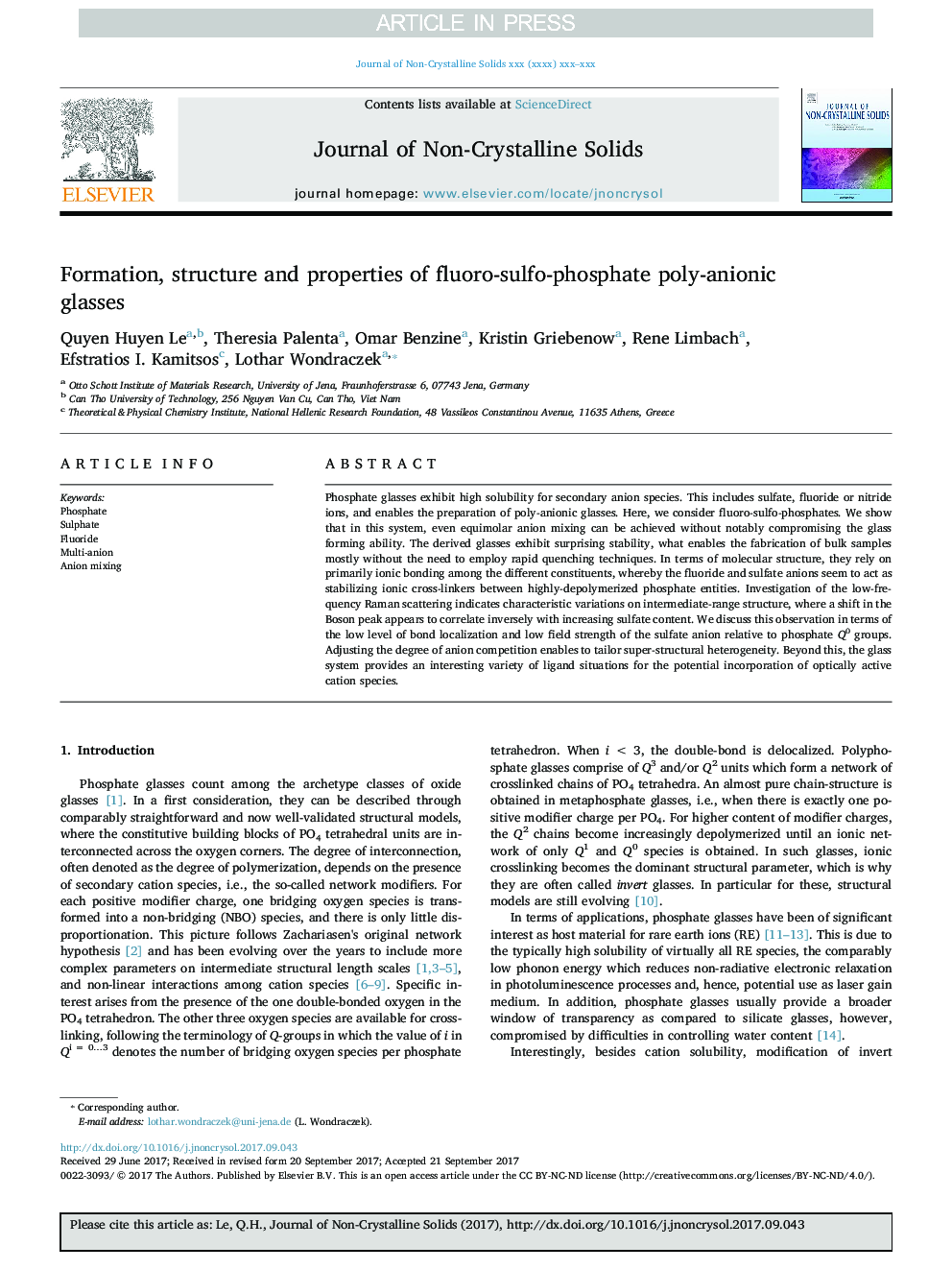| Article ID | Journal | Published Year | Pages | File Type |
|---|---|---|---|---|
| 7900493 | Journal of Non-Crystalline Solids | 2017 | 15 Pages |
Abstract
Phosphate glasses exhibit high solubility for secondary anion species. This includes sulfate, fluoride or nitride ions, and enables the preparation of poly-anionic glasses. Here, we consider fluoro-sulfo-phosphates. We show that in this system, even equimolar anion mixing can be achieved without notably compromising the glass forming ability. The derived glasses exhibit surprising stability, what enables the fabrication of bulk samples mostly without the need to employ rapid quenching techniques. In terms of molecular structure, they rely on primarily ionic bonding among the different constituents, whereby the fluoride and sulfate anions seem to act as stabilizing ionic cross-linkers between highly-depolymerized phosphate entities. Investigation of the low-frequency Raman scattering indicates characteristic variations on intermediate-range structure, where a shift in the Boson peak appears to correlate inversely with increasing sulfate content. We discuss this observation in terms of the low level of bond localization and low field strength of the sulfate anion relative to phosphate Q0 groups. Adjusting the degree of anion competition enables to tailor super-structural heterogeneity. Beyond this, the glass system provides an interesting variety of ligand situations for the potential incorporation of optically active cation species.
Related Topics
Physical Sciences and Engineering
Materials Science
Ceramics and Composites
Authors
Quyen Huyen Le, Theresia Palenta, Omar Benzine, Kristin Griebenow, Rene Limbach, Efstratios I. Kamitsos, Lothar Wondraczek,
